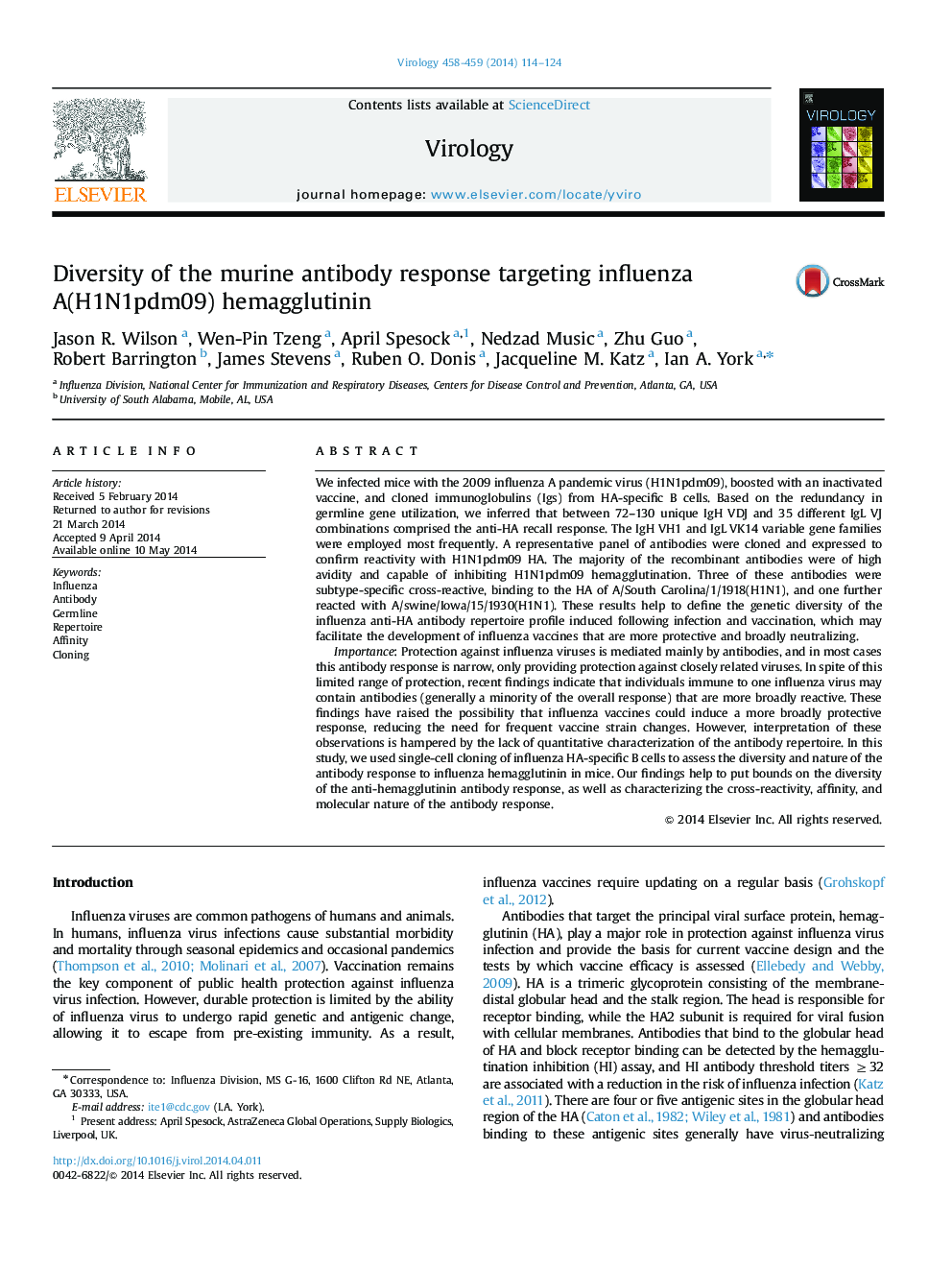| کد مقاله | کد نشریه | سال انتشار | مقاله انگلیسی | نسخه تمام متن |
|---|---|---|---|---|
| 6140119 | 1594249 | 2014 | 11 صفحه PDF | دانلود رایگان |

- A limited number of germline sequences were used in mouse anti-HA antibodies.
- There is considerable redundancy in the germline usage for the anti-HA response.
- About 70-150 heavy chain and 35 light chain germline combinations were inferred.
- A highly diverse anti-HA repertoire was achieved via somatic hypermutation.
We infected mice with the 2009 influenza A pandemic virus (H1N1pdm09), boosted with an inactivated vaccine, and cloned immunoglobulins (Igs) from HA-specific B cells. Based on the redundancy in germline gene utilization, we inferred that between 72-130 unique IgH VDJ and 35 different IgL VJ combinations comprised the anti-HA recall response. The IgH VH1 and IgL VK14 variable gene families were employed most frequently. A representative panel of antibodies were cloned and expressed to confirm reactivity with H1N1pdm09 HA. The majority of the recombinant antibodies were of high avidity and capable of inhibiting H1N1pdm09 hemagglutination. Three of these antibodies were subtype-specific cross-reactive, binding to the HA of A/South Carolina/1/1918(H1N1), and one further reacted with A/swine/Iowa/15/1930(H1N1). These results help to define the genetic diversity of the influenza anti-HA antibody repertoire profile induced following infection and vaccination, which may facilitate the development of influenza vaccines that are more protective and broadly neutralizing.Importance: Protection against influenza viruses is mediated mainly by antibodies, and in most cases this antibody response is narrow, only providing protection against closely related viruses. In spite of this limited range of protection, recent findings indicate that individuals immune to one influenza virus may contain antibodies (generally a minority of the overall response) that are more broadly reactive. These findings have raised the possibility that influenza vaccines could induce a more broadly protective response, reducing the need for frequent vaccine strain changes. However, interpretation of these observations is hampered by the lack of quantitative characterization of the antibody repertoire. In this study, we used single-cell cloning of influenza HA-specific B cells to assess the diversity and nature of the antibody response to influenza hemagglutinin in mice. Our findings help to put bounds on the diversity of the anti-hemagglutinin antibody response, as well as characterizing the cross-reactivity, affinity, and molecular nature of the antibody response.
Journal: Virology - Volumes 458â459, June 2014, Pages 114-124